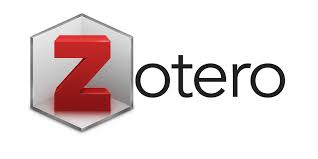Perbedaan Hasil Belajar Matematika Menggunakan Model Pembelajaran Make a Match dan Model Pembelajaran Pair Checks
DOI:
https://doi.org/10.29240/ja.v3i1.2854Keywords:
Mathematics Learning Outcomes, Make a Match Learning Model, Pair Checks Learning ModelAbstract
This study aims to determine the significant difference between the learning outcomes of mathematics using the model Make a Match learning and Pair Checks learning model on the integer material in class VII MTs IB Silaping. This type of research is a comparative study with experimental methods. The population in this study were students of class VII MTs IB Silaping totaling 92 students. The sample of this research is class VII2 b as the experimental class 1 and class VII1 a as the experimental class 2 with the same number of 16 students. The samples were determined by non-probability sampling. The data collection instrument is a test. The data analysis technique used is the normality test, homogeneity test, and to test the hypothesis with the t-test. The results of this study indicate that: (1) mathematics learning outcomes using the Make a Match learning model with an average value of 86,88; (2) mathematics learning outcomes using the Pair Checks learning model with an average value of 80,56. So it can be concluded that (3) there is a significant difference between the learning outcomes of mathematics using the Make a Match learning model and the Pair Checks learning model on the integer material in class VII MTs IB Silaping. This is in accordance with the calculation of the t-test which is obtained at the significant level is 0,05 and dk = 30 with tcount = 2,433 and ttable = 2,042 this indicates that tcount > ttable.
Downloads
References
Ainur, Citra Maharani. (2016). Pengaruh Strategi Pembelajaran Terhadap Hasil Belajar Matematika Ditinjau Dari Keaktifan Belajar Siswa. Skripsi. Surakarta: Universitas Muhammadiyah Surakarta.
Danoebroto, S. W. (2015). Teori Belajar Konstruktivis Piaget Dan Vygotsky. Jurnal Of Mathematics And Education, Volume 2(No. 3).
Gillies, Robbyn M. (2016). Cooperative Learning: Review of Research and Practive. Australian Journal of Teacher Education, Vol 41 (3).
Hamalik, O. (2011). Kurikulum dan Pembelajaran. Jakarta: Bumi Aksara.
Iqbal, Muhammad & Karim, Asrul. (2018). Upaya Meningkatkan Hasil Belajar Siswa Pada Materi Operasi Hitung Bilangan Bulat Dengan Menggunakan Media Kartu Bermuatan Berbasis Model Pembelajaran NHT Pada Siswa Kelas V MIN 49 Bireuen. Jurnal Pendidikan Almuslim, Vol VI (No 2).
Karomah, Mamluatul & Sudiman, Budiyono. 2013. Peningkatan Hasil Belajar Operasi Penjumlahan Bilangan Bulat Dengan Media Wayang di Jalan Bilangan Sekolah Dasar. JPGSD, Vol 1 ( No 2).
Lelya Hilda, D. (2018). Pengaruh Model Pembelajaran Kooperatif Tipe Make A Match Berbantuan Media Grafis Terhadap Hasil Belajar Matematika Siswa Pada Materi Pokok Segiempat Di Kelas VII MTs Negeri Model Padangsidimpuan. Jurnal Logaritma, Volume 06(No. 1).
Nahar, N. I. (2016). Penerapan Teori Belajar Behavioristik Dalam Proses Pembelajaran. Jurnal Ilmu Pengetahuan Sosial, Volume 1.
Nurhana, F. (2018). Perbedaan Hasil Belajar Siswa yang Diajarkan dengan Model Pembelajaran Koperatif Tipe Make A Match dan Tipe Jigsaw pada Materi operasi Aljabar di kelas VIII MTs Al- Fauzan Aek Paing Labuhanbatu. Skripsi UINSU.
Pianda, R. & D. (2018). Strategi & Implementasi Pembelajaran Matematika di Depan Kelas. Jawa Barat: CV Jejak.
Purwanto. (2017). Evaluasi Hasil Belajar. Yogyakarta: Pustaka Pelajar.
Rohmatika. (2017). Pengaruh Model Pembelajaran Koperatif Tipe Pair Checks Berbantuan Lembar Kerja Siswa (LKS) Terhadap Hasil Belajar Matematika Siswa Kelas VII MTs Ma’arif Udanawu. Skripsi IAIN Tulungagung.
Santi Ariati, D. (2019). Pengaruh Model Pembelajaran Kooperatif Teknik Make A Match Terhadap Hasil Belajar Matematika Siswa Kelas VIII SMP Negeri 21 Pekanbaru. Jurnal Penelitan Pendidikan Dan Pembelajaran Matematika (Aksiomatik), Volume 7(No. 2).
Shoimin, A. (2014). 68 Model Pembelajaran Inovatif dalam Kurikulum 2013. Yogyakarta: Ar-Ruzz Media.
Siregar, N. F. (2016). Pendekatan Problem Posing Dalam Pembelajaran Matematika. Jurnal Logaritma, Volume 4(No. 02 Juli).
Siregar, N. F. (2020). Minat Belajar Matematika pada Siswa SMP Negeri 7 Padangsidimpuan. Jurnal Logaritma, Volume 8 (No. 2 Desember).
Yudhanegara, K. E. L. & M. R. (2015). Penelitian Pendidikan Matematika. Bandung: PT Refika Aditama.
Yusri. (2009). Statistika Sosial. Yogyakarta: Graha Ilmu.
Downloads
Additional Files
Published
Issue
Section
Citation Check
License
Authors who publish with ARITHMETIC: Academic Journal of Math agree to the following terms:
- Authors retain copyright and grant the journal right of first publication with the work simultaneously licensed under a Creative Commons Attribution-NonCommercial-ShareAlike 4.0 International License (CC BY-NC-SA 4.0) that allows others to share the work with an acknowledgment of the work's authorship and initial publication in this journal.
- Authors are able to enter into separate, additional contractual arrangements for the non-exclusive distribution of the journal's published version of the work (e.g., post it to an institutional repository or publish it in a book), with an acknowledgment of its initial publication in this journal.
- Authors are permitted and encouraged to post their work online (e.g., in institutional repositories or on their website) prior to and during the submission process, as it can lead to productive exchanges, as well as earlier and greater citation of published work (See The Effect of Open Access).







